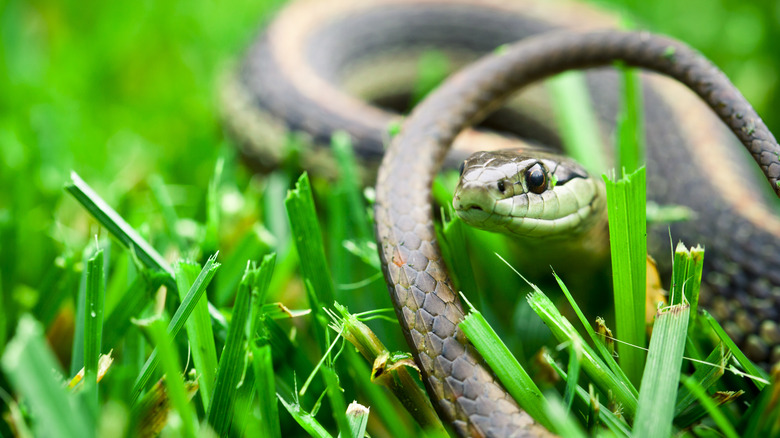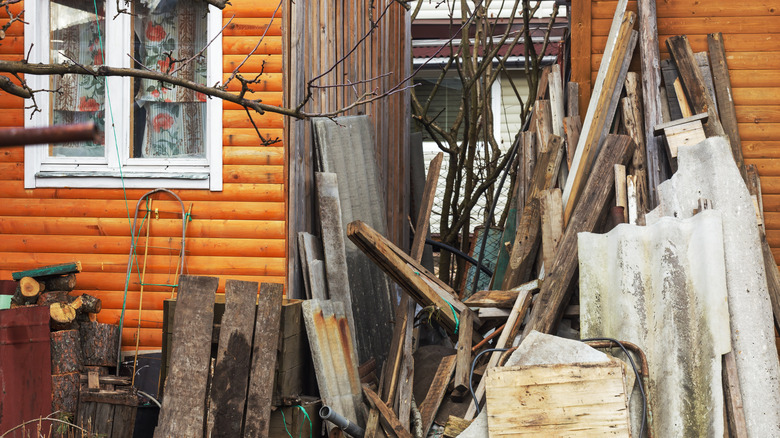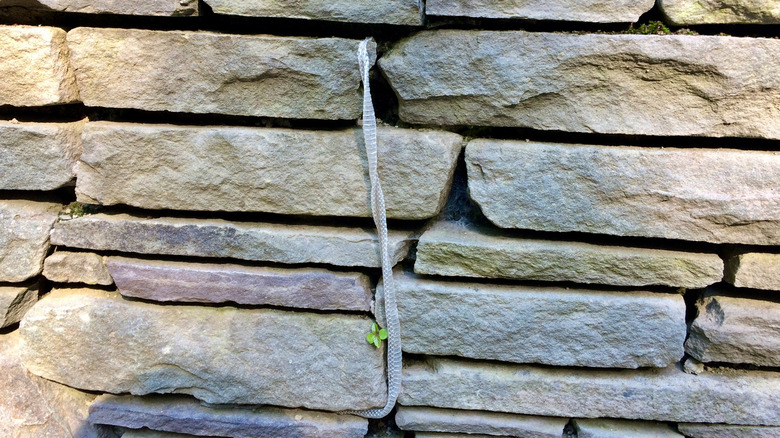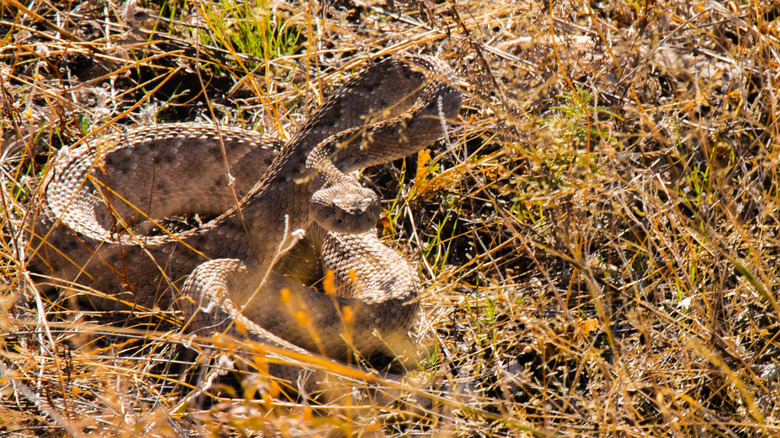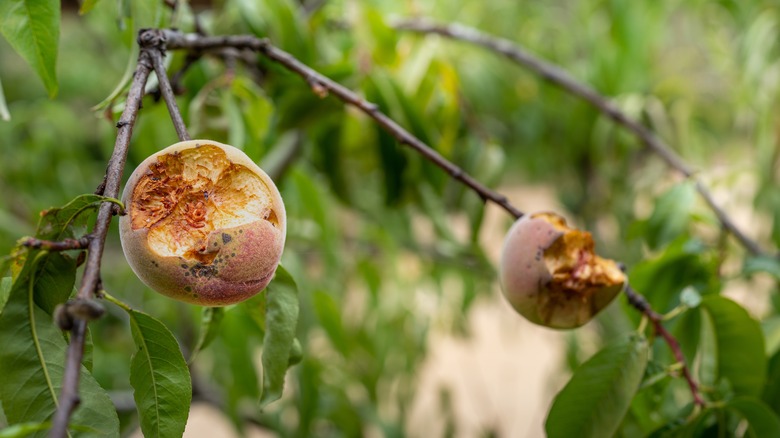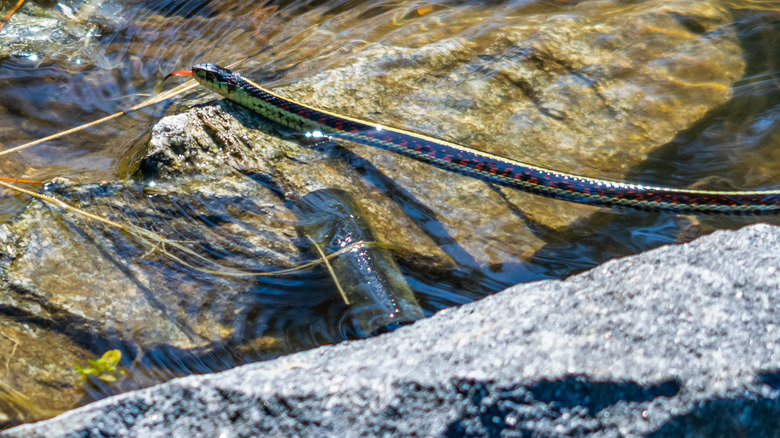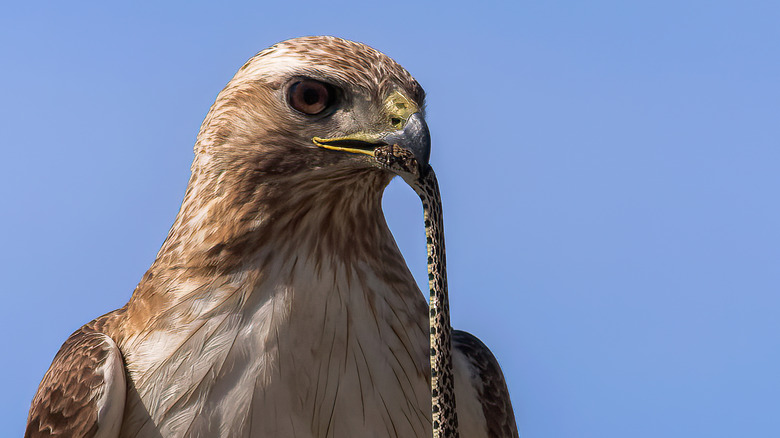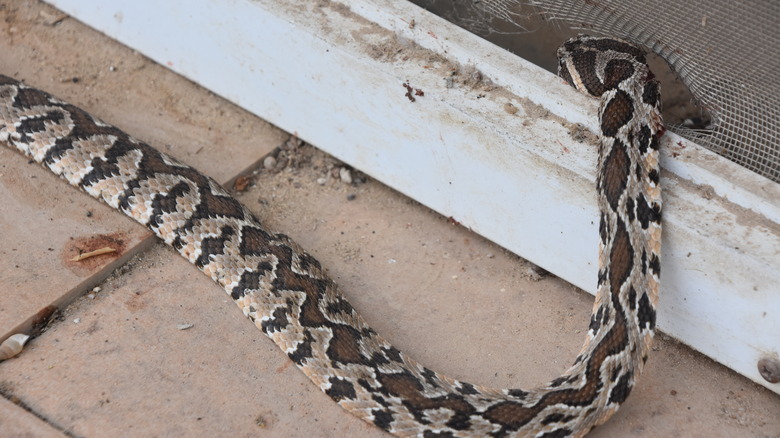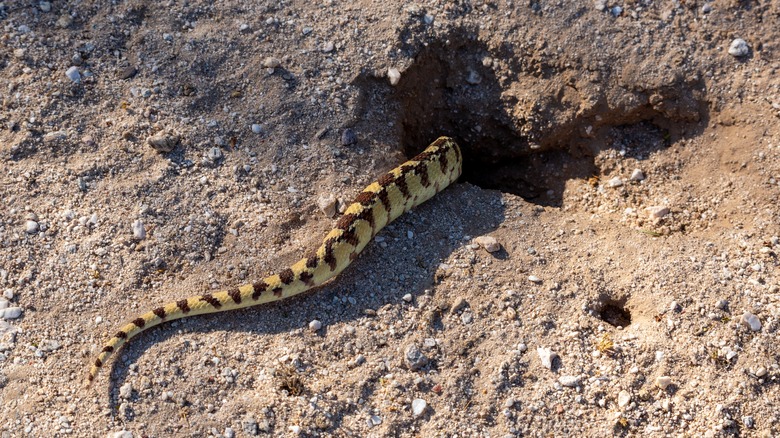8 Common Backyard Features That Attract Snakes Into Your Yard
We may receive a commission on purchases made from links.
Legends associated with St. Patrick say that he drove the snakes from Ireland — and although fossil records seem to suggest that there may have never actually been any snakes in the country at all, it still might sound like an enviable power to some people. Some species of snakes can have beneficial effects in the garden, but not everyone wants to see them. Whether you're trying to keep your kids and pets safe from venomous snake bites or you simply can't abide the sight of any reptilian garden visitor, keeping snakes out of your yard can be a difficult task. There's a lot of conflicting information out there, and you might find yourself getting lost in the weeds, so to speak.
One thing that most experts seem to be able to agree on is that prevention is the most reliable approach, and you're better off focusing on creating an environment that is inhospitable to snakes rather than figuring out how to make like St. Patrick and drive them out. In other words, if you don't want snakes, don't invite them in the first place! You can begin by identifying the aspects of your yard and garden that might be drawing snakes, like tall clumps of grass, fruit trees, and standing water. Then you can work on making changes accordingly to create a habitat that snakes will avoid.
Objects against buildings
Snakes are always on the lookout for hiding places. They do this for many reasons, including regulating their body temperature and avoiding predators. Some of the easiest hiding places you can eliminate are objects stored against structures. Anything situated directly against a deck or your house, such as potted plants, wood planks, and tools propped up against the siding or a shed. If you have spare lumber, try a wall-mounted rack, like this one by Ultrawall. Storing wood at least 12 inches off the ground will discourage snakes from making their home behind or beneath it.
Rock walls
While a stone retaining wall can be a great garden design feature, if your yard seems to have become snake central, the wall may be to blame. Not only do the nooks and crannies of a rock wall provide plenty of shelter for snakes, but they also shelter animals that snakes like to eat. If you're really committed to rocks, consider landscaping with lava rock, which has a coarse texture unpleasant for snakes. Or try using mortared stone, brick, or concrete blocks instead of free-stacked rock, as snakes will be less likely to find somewhere to squeeze into.
Tall grass and dense shrubbery
If you're using ornamental grasses in your garden or have an overgrown shrub thicket, keep in mind that these are favored hiding places for snakes. Snakes are risk-averse, and if there's a chance they might be spotted by predators, they're likely to make themselves scarce. Unfortunately for your gardening dreams, this might mean that simple is best — keep your plants trimmed short and not too densely packed, especially those closest to your home. You might also try using lava rock mulch or selecting plants with at least 24-36 inches of clearance beneath them.
Fruit trees
Snakes don't love fruit trees — their prey does. Rats are particularly fond of fruit, and many species of snakes are fond of rats (including various species of ratsnakes common in parts of the U.S.)! If parting with your fruit trees is too painful, try to reduce their appeal to rodents. Fruit trees shouldn't be close enough to other trees for rats to be able to easily get around. Eliminate low-hanging branches and use a rat guard — a piece of sheet metal wrapped around the trunk — to prevent rodents from climbing up. Make sure to remove fallen fruit quickly.
Still or standing water
Regardless of whether you have a fish pond or you just happen to live in a wetter climate, standing water in your yard may be drawing snakes. One very simple reason for this is that snakes, like all animals, need water. If your yard provides a source of drinking water, snakes might be tempted to stay — especially if there's an abundance of prey animals living in or visiting the water source, as well. You can add a filter to agitate the water in your backyard pond if getting rid of it isn't an option.
Lack of predators
Instead of focusing on how to make your yard unappealing to snakes, there are ways you might try to make your yard attractive to their' predators! Raptors, or birds of prey — such as hawks, falcons, kestrels, and owls — can be your allies. If you don't have any tall trees nearby, you can build a raptor perch. These T-shaped structures should be about 15 to 20 feet above the ground. Although raptors get most of their moisture from their prey, they do like to have a nice bath, so a birdbath might make your yard a raptor spa.
Open or unsealed structures
Double-check that the door of your garden shed or other structure in your yard is shut at all times and examine the clearance beneath the door to make sure that it's not wide enough for anything to squeeze through. If there are openings anywhere near the ground, make sure to close them off. You can use caulk, mortar, and other easily available substances to seal off any holes or gaps in the walls. Or you can add some snake-proof fencing around the building. Remember that if rodents can get in, snakes can and will follow.
Burrowing animals
If burrowing animals such as moles, chipmunks, or gophers are a frequent sight around your home, you may want to consider exploring some options to get rid of them. For one thing, many snakes eat moles and other small tunneling mammals; for another, although snakes themselves don't dig holes, many are happy to take up residence in unoccupied burrows, which provide much needed humidity and cooling in hot, dry climates. Try stomping on any visible holes to collapse them next time you're in the garden, and consider doing some research on how to remove moles and gophers.
